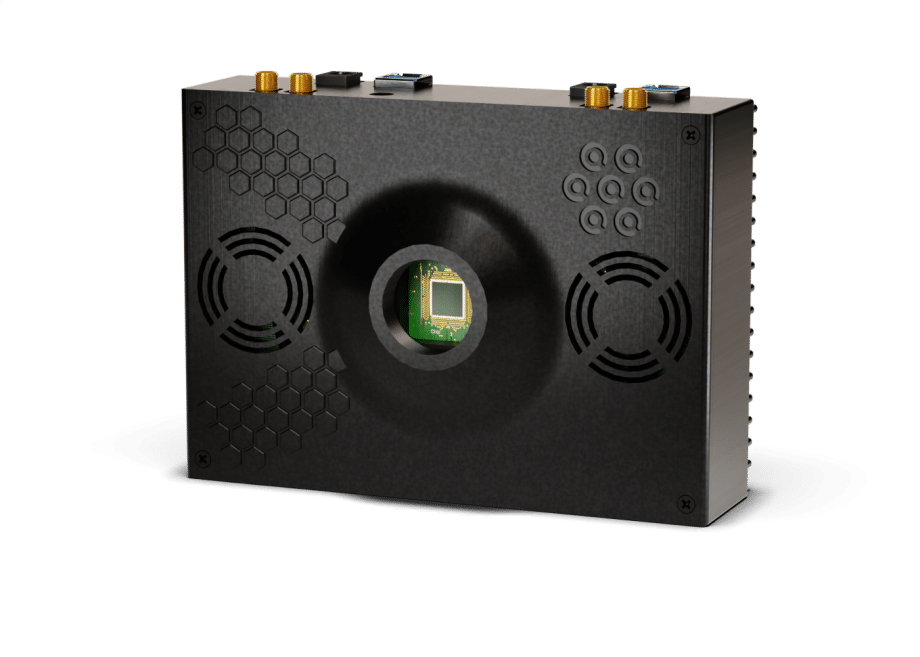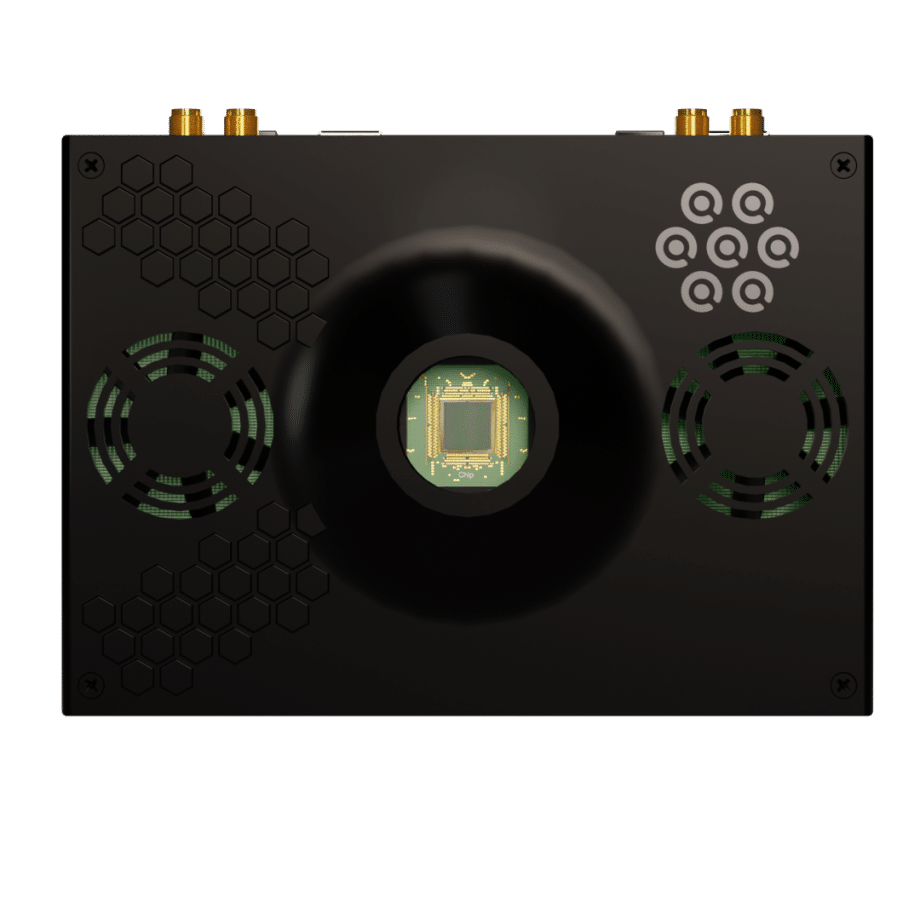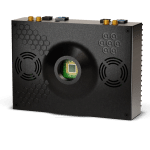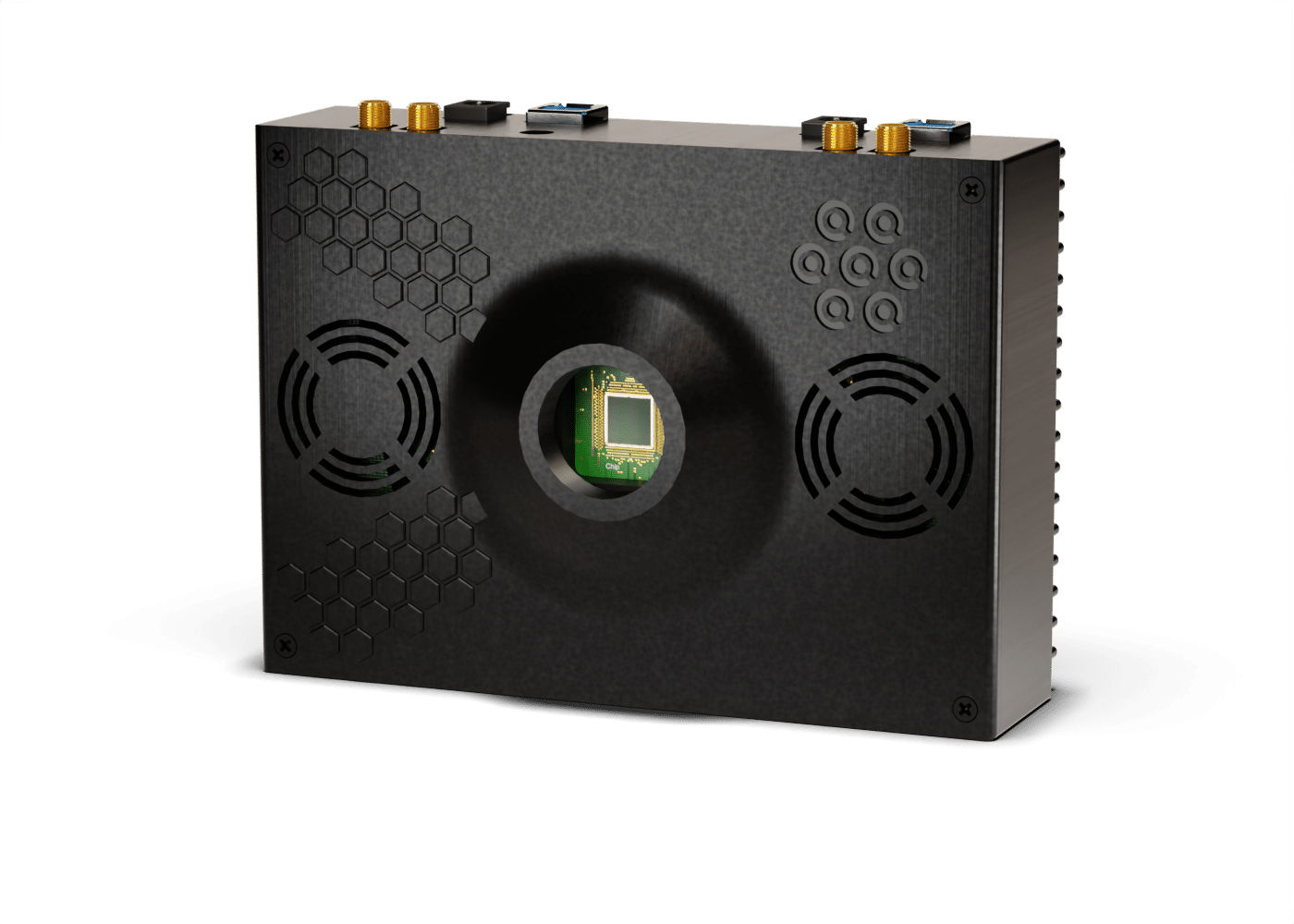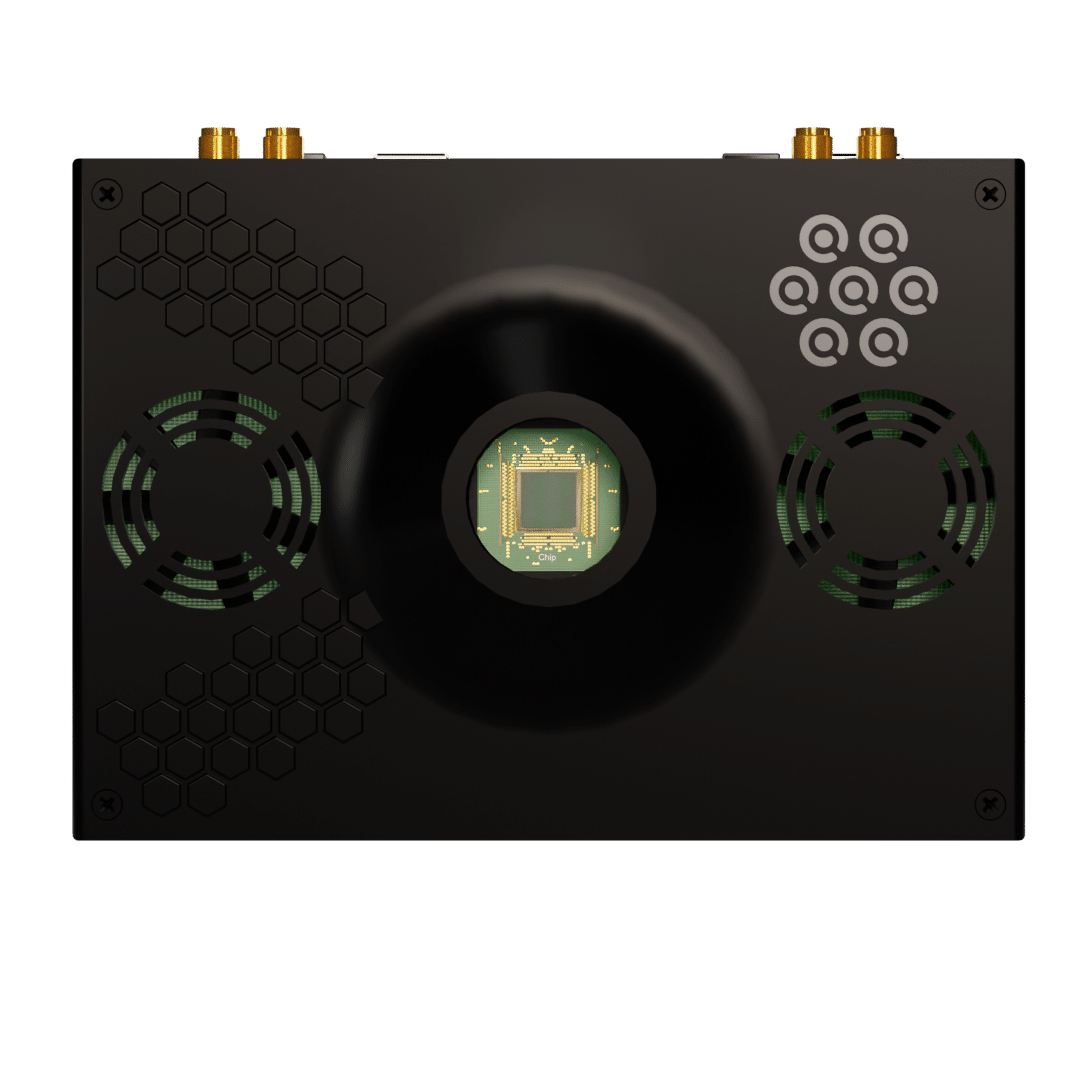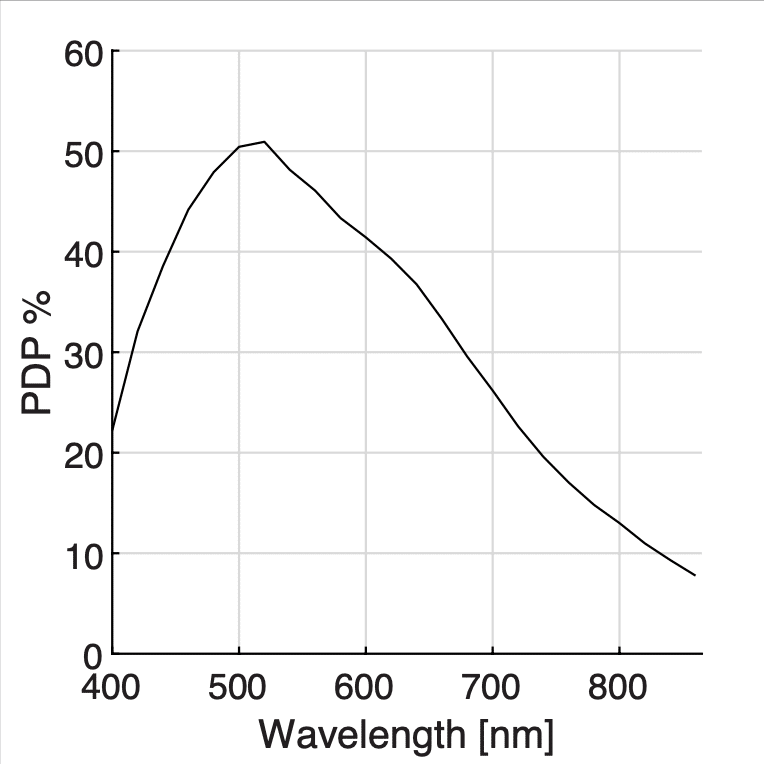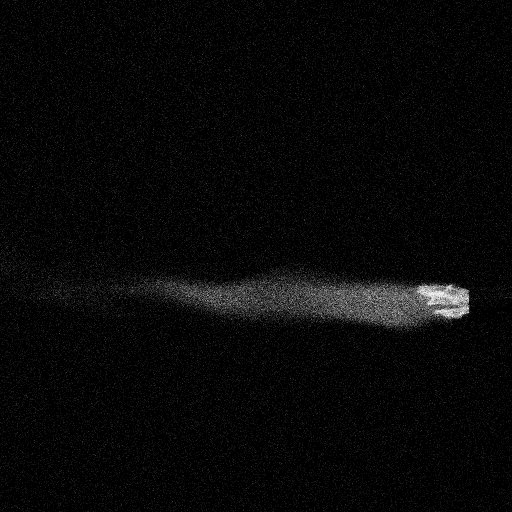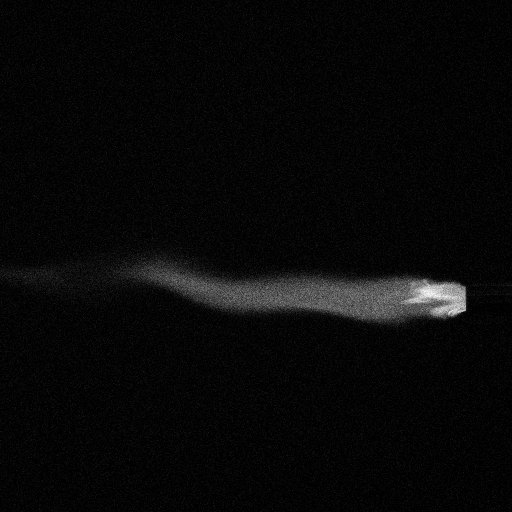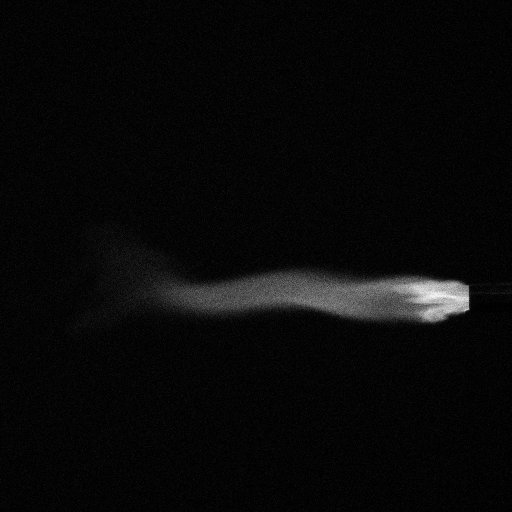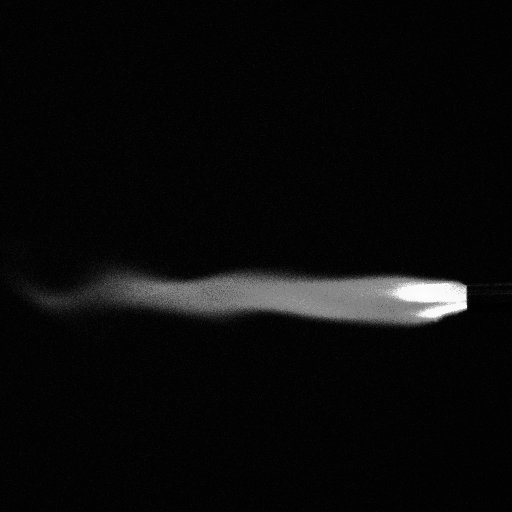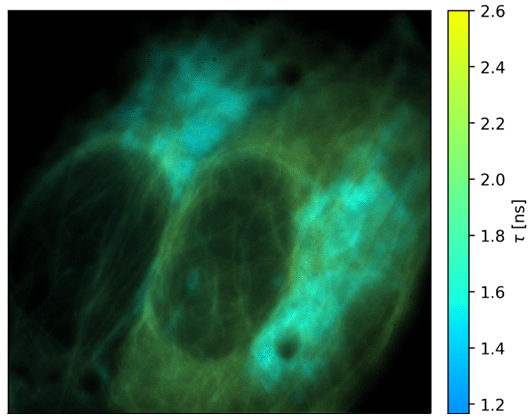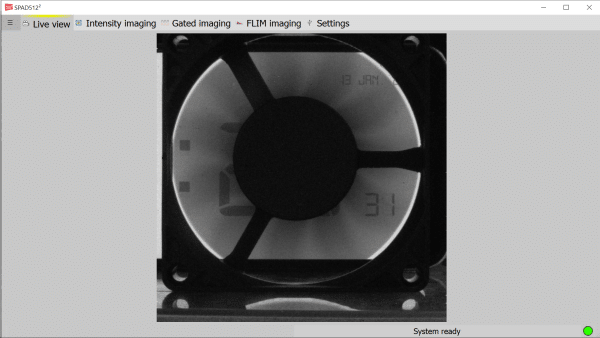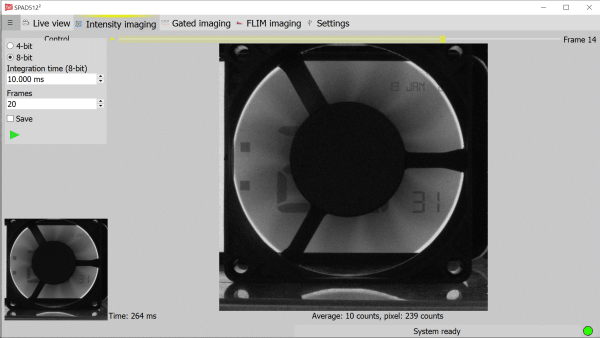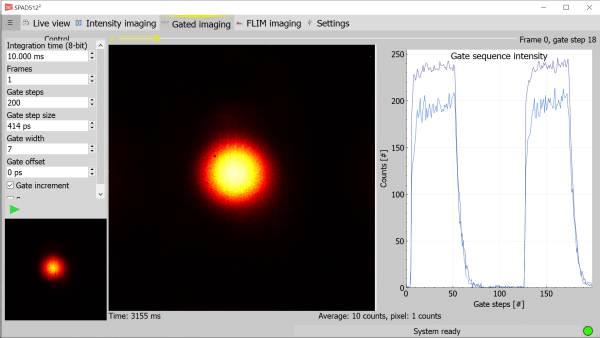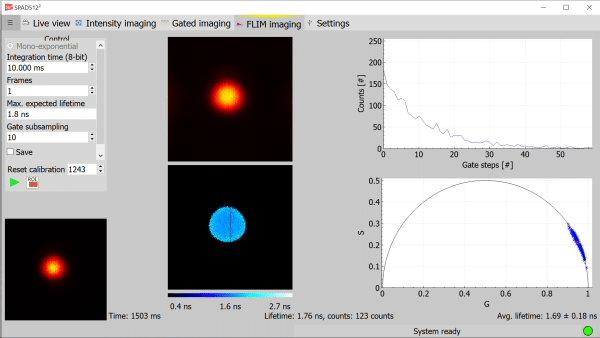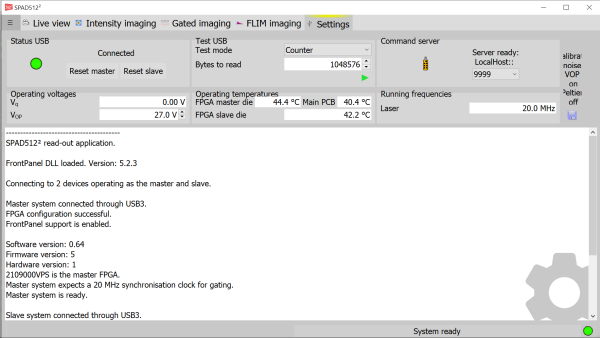SPAD512S photon-counting gated SPAD camera, in a nutshell
SPAD512S is a photon-counting gated camera based on a proprietary SPAD chip designed for single-photon sensitivity high-speed imaging. The core of the camera is a SPAD image sensor with 512 x 512 pixels. It features a global shutter with picosecond precision and nanosecond exposures. It enables a peak photon detection probability of more than 50%, a typical dark count rate of less than 25 counts per second and effectively zero readout noise.
The system software enables 1-bit, 4-bit, 6-bit, 7-bit, … up to 12-bit imaging with gated capability down to 6 ns with steps as small as 20 ps and phasor FLIM processing. It can be accessed through TCP/IP for easy integration into LabVIEW, Matlab, or Python.
Thanks to its single-photon sensitivity and gated capability the SPAD512S aims to replace EMCCD and ICCD is many experiments.
SPAD512S photon-counting gated SPAD camera, more information
Intensity imaging
SPAD512S delivers 1-bit, 4-bit, 6-bit, 7-bit or 8-bit intensity images, though all bit depth are obtained by sequentially summing 1-bit images. In a 1-bit image each pixel indicates wether it detected at least one photon (pixel value = 1) or none (pixel value = 0). Since the camera has only a single-bit memory in each pixel, incident photons might be ignored when the memory is already filled with a ‘1’. This effect is mainly noticeable for higher photon count rates and can be corrected, for instance using the pile-up correction. This correction transforms the measured amount of photons into the probable amount of photons that hit the SPAD. To correct the images, one can use the following formula to correct the measured number of photons in each pixel Nmeasured into the actual amount of photons Nactual:
This formula is valid for a 8-bit image data. In case a different bit depth is used, the value 255 has to be adapted to reflect this change, e.g. 4-bit requires the value 15. For more infos about the intensity imaging capabilities, please refer to the Software tab.
Gated imaging
SPAD512S have gated imaging capabilities which provide some unique features similar to intensifiers. The SPAD512S gating measurement principle is explained below.
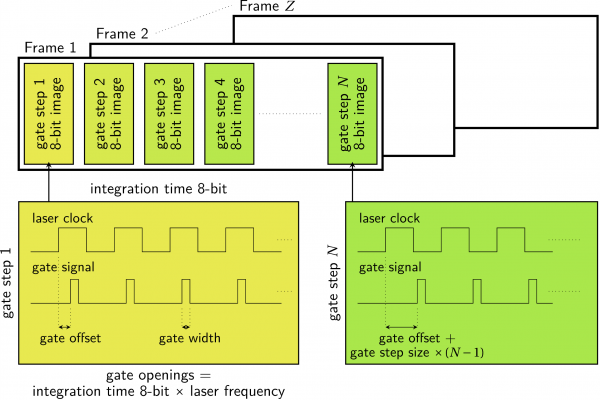
A gated frame is a series of 6, 7 or 8-bit images, each shifted by a small time step in order to reconstruct the time varying phenomenon of interest. The number of images to be taken in a single frame is given by the gate steps parameter, or in case arbitrary step sizes are used, by the number of arbitrary steps. Each step, the gate opening, defined by the gate width, is shifted by the set gate step in picoseconds. The gate is shifted away from the rising edge of the laser clock in either positive direction (gate increment) or negative direction (gate decrement). To create a single 8-bit image, the gate is opened for N times, where N is given by the integration time (8-bit) multiplied by the laser frequency. For example, when the integration time is set to 3ms and the laser frequency is 20MHz, the gate will open 60,000 times to create a single image. For more infos about the gated imaging capabilities, please refer to the Software tab.
Fluorescence lifetime imaging
SPAD512S also features fluorescence lifetime imaging capabilities. This mode uses a sequence of gated images to calculate the lifetimes and generate a lifetime image. FLIM images are generated with the phasor method.
In the case of mono-exponential samples, the calibration of the IRF finds the falling edge of the gate. The end of the IRFs falling edge determines the starting point for normal measurements and the measurement window is defined by the maximum lifetime. Since the gate falling edge is convolved with the fluorescence decay for normal measurements, we will capture exactly the exponential part of the decay curve. The phasor is calculated directly from the measurement data without further corrections.
In the case of bi-exponential data, the calibration and measurements rely on the complete gate window. Therefore, the calibration determines both the gate rising and falling edges and calculates the complete window, including the extension from the fluorescence convolution. For normal measurements, the phasor data is calculated and the IRF phasor data is subtracted from it.
For each measurement, an intensity image, lifetime image, pixel response curve and phasor plot are generated. For more infos about the fluorescence lifetime imaging capabilities, please refer to the Software tab.
What is a SPAD or single-photon avalanche diode ?
A single-photon avalanche diode or SPAD is a solid-state photodetector based on a reverse biased semi-conductor p-n junction like photodiodes and avalanche photodiodes (APDs), but unlike regular photodiodes, a SPAD operates in a mode called “Geiger mode” where a single incoming photon will create an electron-hole pair which will be amplified enough to create a measurable current. Therefore SPADs are intrinsically able to detect single-photons, with a very high temporal resolution.
The key component of a SPAD is a region within the diode called the depletion region. This region is designed to have a high electric field, which allows it to function as a high-gain avalanche photodiode. When a single photon interacts with the depletion region, it generates an electron-hole pair. The high electric field across the depletion region causes the electron and hole to accelerate, leading to a process known as impact ionization in which each electron or hole can gain enough energy to generate another electron-hole pair, resulting in an avalanche effect. This avalanche process rapidly amplifies the initial signal, converting the weak optical signal from the single photon into a detectable electrical pulse.
SPADs can be compared to other single-photon detection technologies such as PMTs and APDs, but SPADs have several advantages over those two type of detectors.
Compared to photomultiplier tubes (PMTs), SPADs have:
- higher sensitivity over wider spectral range ;
- better time resolution ;
- less bulky so more suitable for assembling into large arrays ;
- less sensitive to electromagnetic or mechanical perturbations.
Compared to avalanche photodiodes (APDs), SPADs have:
- higher detection efficiency ;
- smaller active areas ;
- generate less dark counts.
What is a SPAD camera ?
A SPAD camera refers to an arrangement of multiple single-photon avalanche diodes (SPADs) that are integrated into a two-dimensional rows and columns format. Each SPAD within the array operates independently and is capable of detecting individual photons. The SPAD camera combines the sensitivity and photon-counting capabilities of SPADs with the ability to detect photons across a larger spatial area.
Each SPAD in the camera array is assigned a unique address, allowing individual SPADs to be accessed and controlled independently. This addressing scheme enables selective readout of specific SPADs or groups of SPADs within the array, providing flexibility in data acquisition and analysis.
The main advantage of using a SPAD array is the ability to perform spatially resolved photon detection. By detecting photons across multiple locations simultaneously, it allows for the capture of detailed spatial information about the incoming light. This is particularly useful in applications such as imaging, where the spatial distribution of photons can be used to construct images or maps.
To view more photon counting photos, click HERE.
To visit the manufacturer’s website, click HERE.

